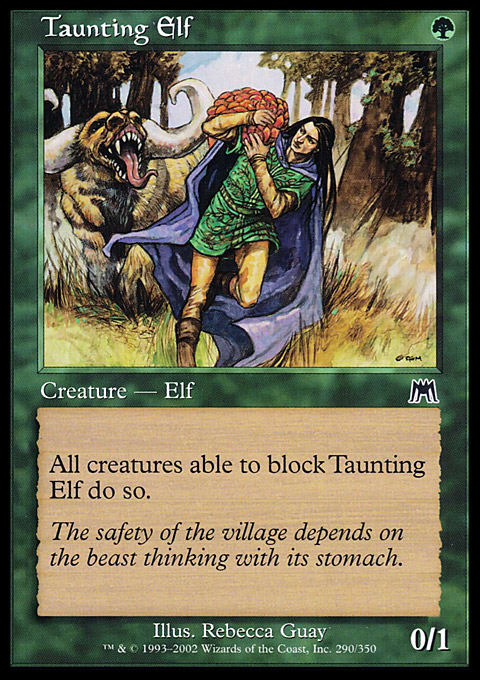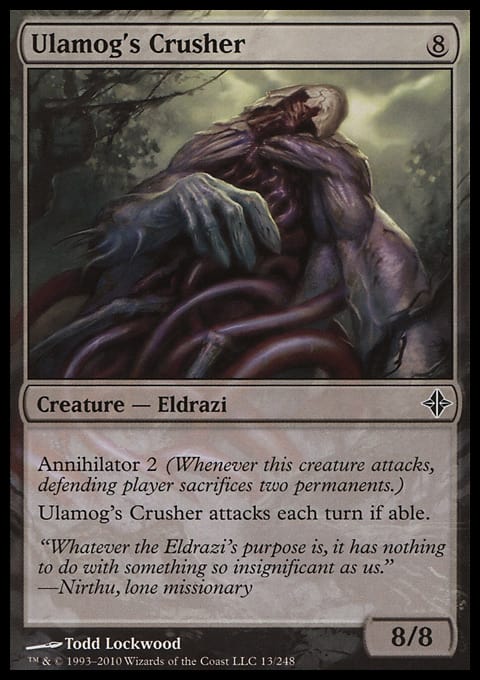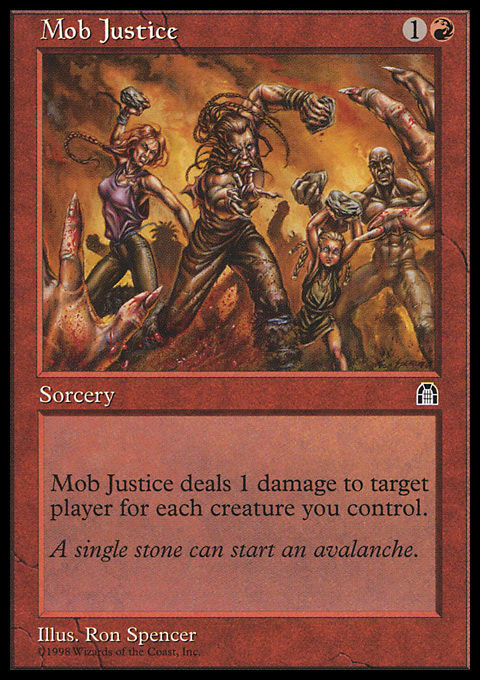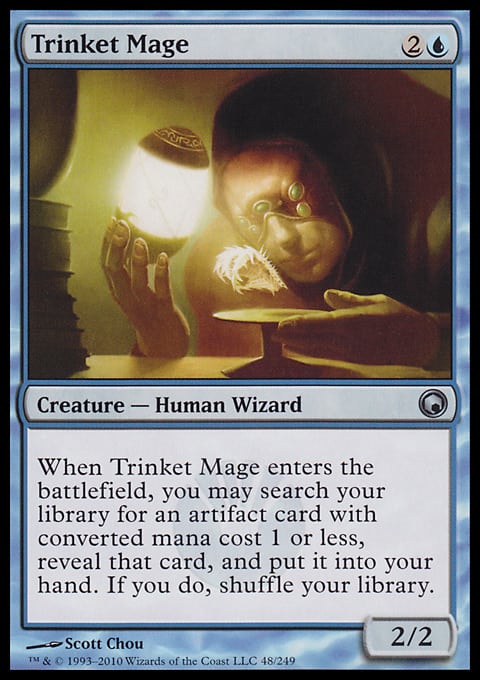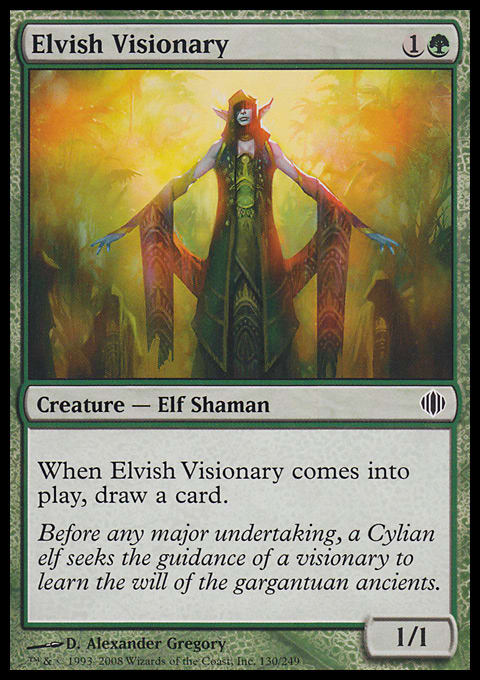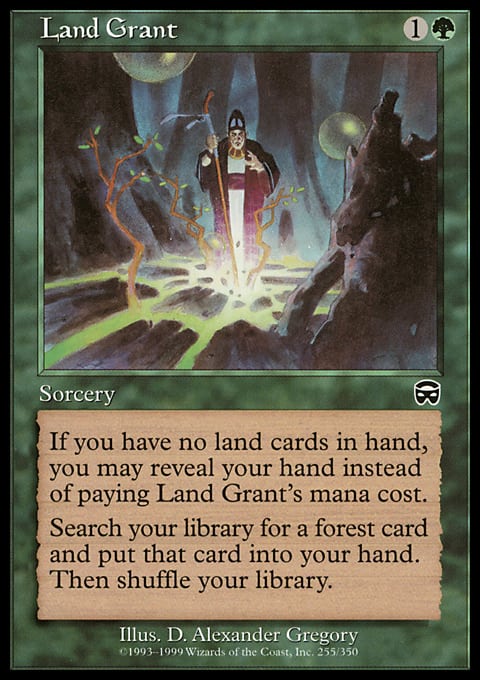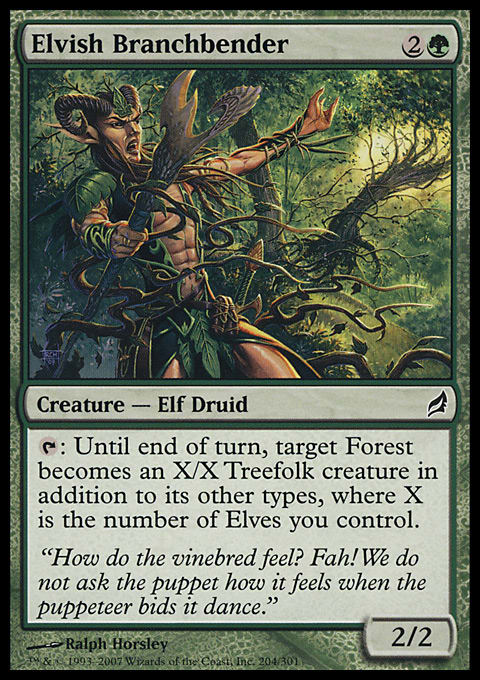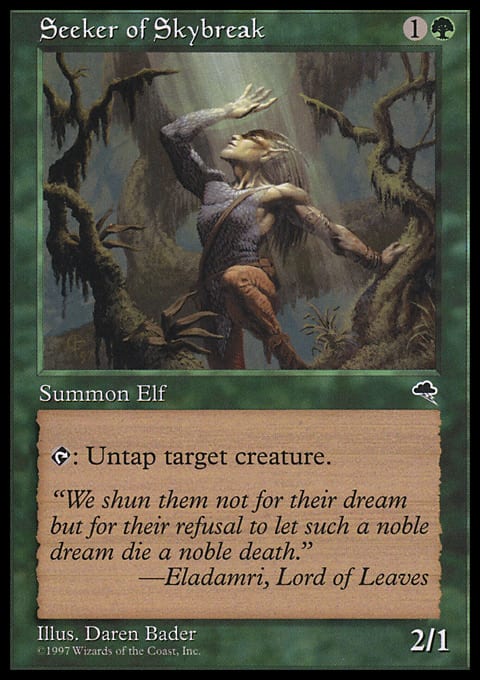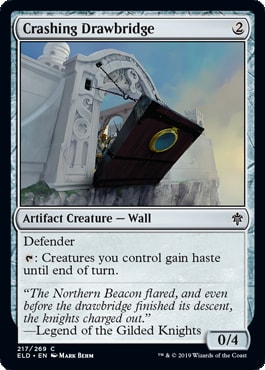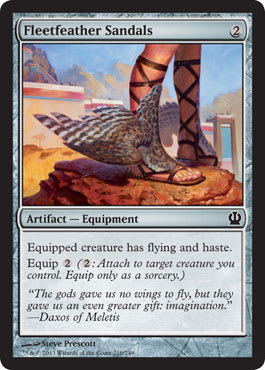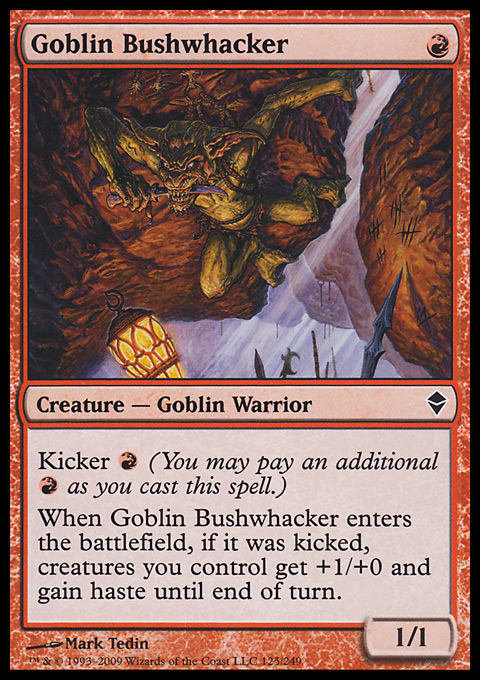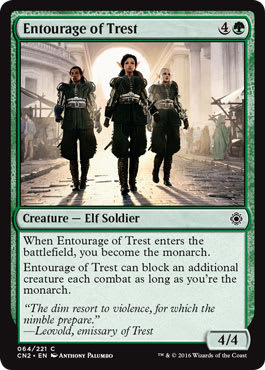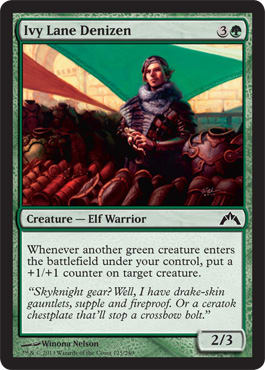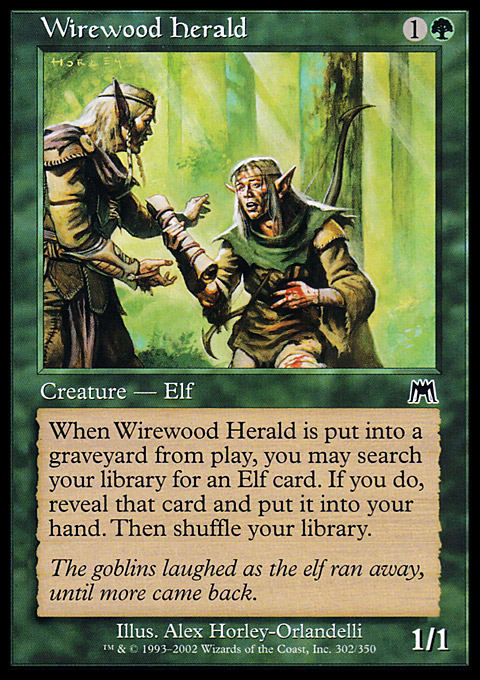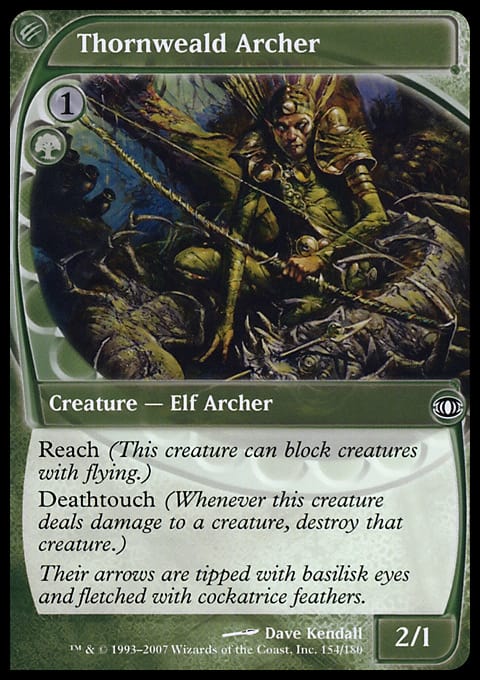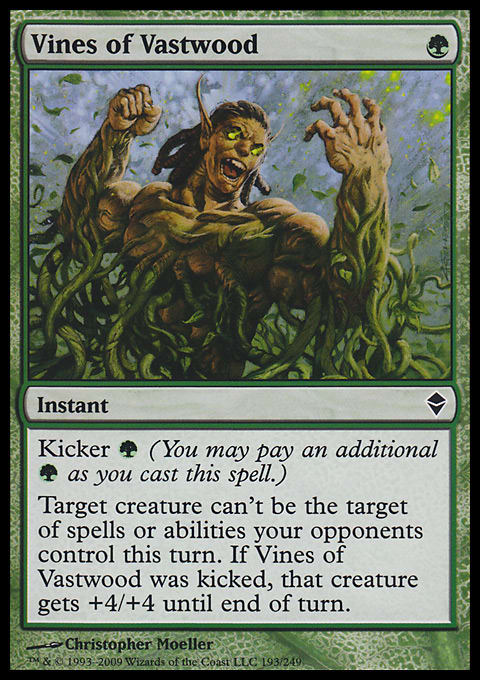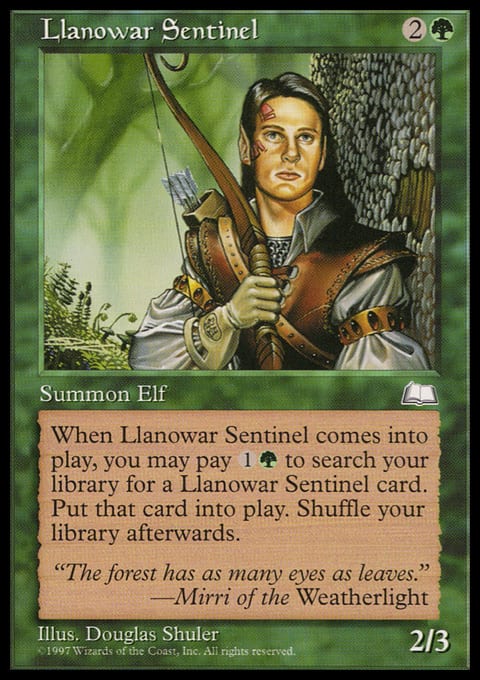Welcome to week two of my Ultimate Pauper Elves Primer! Last week I gave a bit of an introduction to the archetype with the cards that you can expect to see most in your average main deck and how they work in conjunction with one another. This acts as a sort of deck tech for the uninitiated while also giving an overview on what the role of each card is, how many you want of each, and so on.
Now we're going to be looking over some of the lesser cards. Many of these cards have shown up less frequently, in very specific metagames, or are just odd-ball one-offs people have tried in the past. As we look at each card, I'll explain to you why it is or isn't good in the deck. Maybe it works in specific scenarios or is worth testing. Other times, it just doesn't quite cut it, even if it looks like it might.
This section of the primer is less of a deck tech like part one was and is instead more of a direct continuation of it. We're going to dive straight in but first, I'm going to repost the list from last week so that you can use it as a reference if needed:
Elves | Pauper | Kendra Smith
- Creatures (38)
- 2 Elvish Mystic
- 2 Fyndhorn Elves
- 2 Sylvan Ranger
- 3 Essence Warden
- 3 Llanowar Elves
- 3 Priest of Titania
- 3 Wellwisher
- 4 Birchlore Rangers
- 4 Lys Alana Huntmaster
- 4 Nettle Sentinel
- 4 Quirion Ranger
- 4 Timberwatch Elf
- Sorceries (7)
- 3 Distant Melody
- 4 Lead the Stampede
- Enchantments (1)
- 1 Spidersilk Armor
- Artifacts (1)
- 1 Viridian Longbow
Note that this list is exactly the same as the one I listed last week. This is largely to keep things consistent in helping newer players reading follow along better. Actual in-depth discussion will come in the fourth week where I cover a swath of different versions of the deck to give a better idea of how to build for specific situations.
For now, though, let's take a closer look at some of the more unusual cards that you might find played in the archetype. These are presented in no specific order, so please view these more as simply an overview of each individual card.
Wildheart Invoker
Ah yes, the big, bad dinosaur-riding Elf! This has been a finisher that has shown up on occasion over the extended life of the archetype. On its own, Wildheart Invoker isn't particularly notable as it's just a 4/3 for ![]()
![]()
![]() . The real treasure is in the ability, which makes an Elf of your choice not only gigantic, but gives it trample - something incredibly important when paired alongside creatures like Elvish Vanguard or Timberwatch Elf. Both of those can cause tremendous attacks, only to get chump blocked by a small creature, meaning your opponent takes no damage. Even only one shot can be enough if you have one of those creatures, and it gets even better if you have Priest of Titania allowing multiple activations every turn.
. The real treasure is in the ability, which makes an Elf of your choice not only gigantic, but gives it trample - something incredibly important when paired alongside creatures like Elvish Vanguard or Timberwatch Elf. Both of those can cause tremendous attacks, only to get chump blocked by a small creature, meaning your opponent takes no damage. Even only one shot can be enough if you have one of those creatures, and it gets even better if you have Priest of Titania allowing multiple activations every turn.
One of the problems I've had with this card is that it's often just, as I mentioned before, a 4/3 for four mana with an ability that you're priced out of. Of course, with the right board, eight mana is no problem, but that's why it often shows up as a one-of, if at all. Fellow Elves expert c_is_for_cookie has played the singleton copy for a considerable length of time and done quite well with it, however, so it must be doing something right.
One other one worth mentioning for this kind of slot is Elvish Herder. I've looked at this card in the past and I think it fills a role similar to the Invoker. I do think they're a bit different, however, as the Invoker's pump ability isn't irrelevant and can save you from plenty of removal spells. However, it's costly, and there are times where you might just consider the trample effect for your big creatures, and that's where the Herder may be a better option. Cheaper to both cast and activate, it can put in the work more easily. However, because it also doesn't give a pump, I'd only use this card if you're running the full four copies of Timberwatch and Elvish Vanguard, and even then I might still consider trying Wildheart Invoker and seeing which you prefer for yourself.
In a slightly similar vein to the above cards, I see a lot of people talk about using Taunting Elf as a means to pushing damage through. I like it the least of the three. It's probably the easiest to get off the board, since anything can - and is required to - block it and it's also required to attack to utilize its ability. This usually makes either other option just better since they can sit on the sidelines and put in the work there.
Ulamog's Crusher
Ulamog's Crusher is one of the top-end cards that might see play from time to time. It shows up less frequently, but has historically been a card that can make an impact. There's a few notable reasons.
- The biggest reason is that it breaks through Fog effects. Even if it doesn't do damage, it still makes your opponent sacrifice permanents. This has been effective against decks like Turbofog and Fog Tron lists in the past.
- In addition to your traditional Fogs, such as Moment's Peace, this also is a card that cannot be affected by Prismatic Strands. The reason is that it's a colorless creature and Prismatic Strands only stops a specific color, meaning your opponent will not be able to prevent damage from it and will still need to sacrifice permanents as well.
- Last but not least it hits hard and is great at clearing boards. In some Elves mirrors, a quickly dropped Crusher can spell doom if the opposing player can't go off quickly before it attacks as it'll eat away their defenses and overall board position.
The big Crusher has been seeing a bit more play of late because it's that much easier to find off of a Winding Way and Lead the Stampede than it might've been with a Distant Melody. If you went off with Melodies then you probably should just be winning the game and not worrying so much on the incremental advantages Crusher provides.
Myself, I've tried Crusher in the main deck before. Prior to writing articles, I did a small write-up that talked about the possible implications of how the downshift of Lead the Stampede could affect the deck. One way was that I felt you could more easily set up a board with tons of mana and spit out a huge Crusher fast. In testing, however, it felt more clunky than anything. In a deck without Melody and instead focusing on Winding Way, it might be a bit better, but for me personally I wasn't a fan. If you like the card, it's fine, though, so don't let me stop you playing this big monstrosity!
Spidersilk Armor
Spidersilk Armor is, in actuality, a sideboard card. The main advantage of the card is that it gives all of your creatures an extra toughness so it can evade cards like Electrickery, Blazing Volley, and so on post-board. I'll go over that a bit more next week, but why does it show up here?
The answer is simple: some of the format's best decks tend to run a one-of copy of Electrickery. This is usually Boros, but it can also show up in the likes of Izzet Delver/Faeries and Tron. By slipping in one copy, it allows us to be ready for this eventuality. It also happens to lineup quite well against a lot of decks like the aforementioned Boros and Izzet which feature a ton of fliers. Because Spidersilk Armor also gives our creatures reach, it enables us to block attackers we otherwise might not have been able to.
This is a card that I would only recommend in very specific metas. It's great right now as a one-of but there have been points historically where it's less good and should instead be designated more exclusively to the sideboard. Even more rarely, you'll sometimes see other versions in main decks like Magnify so as to have an additional win condition as well as board wipe insurance. This effect isn't always the best, largely because it's merely a one-time use, but it's still something to consider, especially if you're on a really, really tight budget building your list.
Mob Justice, Massive Raid, Harsh Sustenance, Gruesome Fate, Valakut Invoker
Now we're at these cards. All five of these represent a very specific slot in the deck: to kill your opponent without using the combat step. Much like Viridian Longbow, they're a way to push through Fogs primarily and each one has their own unique use. The most popular options of these currently are both Mob Justice and Harsh Sustenance.
Mob Justice is mostly still used simply because it was used the most historically before players began adapting other options. Because there are still a lot of newer players who might not understand the subtleties between the cards, or else just found older lists, they look to Mob Justice. I'm here to tell you that of probably all these options - with maybe the exception of Valakut Invoker - Mob Justice is almost certainly the worst of the bunch.
I'll go a bit more into those specifics next week when I talk about sideboarding, but one of the big reasons people like to cite it as better is the mana cost. The reality, though, is that you can only cast these off of Birchlore Rangers mana. Because of that, if you have enough creatures to kill your opponent with one of these effects, you probably have the ability to make as much non-Green mana as you need to cast any one of these effects, so you might as well choose the one that's most effective.
The one I prefer personally is Harsh Sustenance. For the purposes of this deck, it's exactly the same as Massive Raid except it also gives you some life in the process. Gruesome Fate is best if you're simply trying to avoid both Prismatic Strands and Standard Bearer, but I think the Instant-speed aspects of Harsh Sustenance to be a bit more important. Again, I'll go more into those specifics next week.
The one last note is on Valakut Invoker. One thing you may recall me mentioning last week was how Winding Way has a tough time when it comes to non-creature spells and can even end up throwing them into your graveyard. This is where this Invoker comes in. By being something we can grab off of a Lead the Stampede or Winding Way, it acts as a card that fills this direct damage role without being at risk of ending up in the bin. You'll see a lot more of this kind of thing when it comes to sideboarding next week.
Most of the time, you won't see these cards in the main deck. Every so often, players will run one or two copies, but I would only do so in very specific metas, and usually ones where you believe you're going to struggle to have a meaningful combat step.
Trinket Mage
Trinket Mage is a card that players like to use as a way to find your usually lone copy of Viridian Longbow. The idea is that as our deck already features Blue mana, it shouldn't be that difficult to find. Even better - with cards like Lead the Stampede and Winding Way, it actually gives us a way to essentially find a Longbow off of these two cards.
Personally, I really don't care for this card.
The biggest reason is that it's a card that requires Blue mana. Off-color cards are able to be cast in a deck like ours, yes, but they're ones that should be winning us the game. Casting a Distant Melody or one of the direct damage spells I mentioned above is something that's big enough it should win you the game, and thus worth spending the off-color mana on. That leads me to my next point.
Finding a Longbow off of a Trinket Mage isn't always going to win you the game. This is important to note because it then begs the question why aren't we running something else, like one of the cards mentioned in the last point? Not only that, but it adds unnecessary redundancy that can actually backfire. By being off-color, it can get stuck in your hand. Just as well, if you have both Longbow and Trinket Mage in your hand at the same time, then your Trinket Mage is pretty much useless.
This ultimately makes me wonder why don't we simply run a second Longbow in its place. Sure, we can't find it off Lead or Winding Way, but even if we cast Winding Way to find the Trinket Mage, we still run the risk of accidentally tossing the Longbow anyways. I've actually run two main deck Longbows in the past for certain metas and I'd much rather do that than run Trinket Mage. I'd recommend you do the same.
Elvish Visionary
Elvish Visionary is a mainstay of Elves decks in just about every format, being both an Elf for the sake of Elvish synergies and easy cantrips to smooth out draws. In the context of Pauper, however, it's not really all that great, since our main deck card draw from the likes of Distant Melody, Lead the Stampede, and Winding Way is so much better. When it comes to actual quality of our Elves, the actual pieces work far better than Visionary. There's an argument for it as a dedicated option in the Mono-Green builds, but I still don't really care for it there. If you do run it, run it as a two-of at most.
I'd also like to give a small mention to Coiling Oracle. The longtime favorite hasn't seen a whole ton of love in Pauper, which might actually surprise some people especially since it seems like it would be ideal for a card like this. It mostly just doesn't have a home and there aren't many ramp decks that aren't Elves or Mono-Green, so it hasn't had a place anywhere. In Elves, it has the issue of requiring Blue mana which, as you've seen me mention plenty already, isn't something we want to rely too heavily on if we can help it. In addition, we really don't run very many lands, so often times it ends up feeling more just like an Elvish Visionary. Since the Visionary is easier to cast in the greater majority of scenarios, I suggest playing that if you really have the desire for an effect like this.
Land Grant
All right, now we've come to my favorite card to talk about and probably my biggest pet peeve: Land Grant. There are a number of players out there who feel that Land Grant is a perfectly acceptable card to play in Pauper Elves. I'm here to tell you that it isn't. It's what we might call a trap. Before I dive into what makes the card good, let's check why players like this card:
- The main reason players like the card is that it thins your deck, thus making your Lead the Stampedes and Winding Ways more effective.
- It somewhat requires less lands. Players running Land Grant often find themselves shaving a land to run eight Forests and four Land Grants as opposed to thirteen Forests.
- It untaps your Nettle Sentinels, allowing for extra shenanigans.
- It shuffles your deck, allowing you to put important sideboard cards that may have gone to the bottom of your deck after casting a Lead the Stampede back closer to the top.
Now let's break down some of the reasons why this doesn't really line up as well as you might think. We'll start with the deck thinning aspect. I'm no serious math expert, but I know there are a number of other authors and content creators out there who have gone over it. Essentially, one or two small increments of deck thinning don't do much, but a number of them add up over time. Elves is not a deck that does this well. Decks that use cards like Ash Barrens alongside the likes of Evolving Wilds, Ponder, Preordain, and Brainstorm are because they have numerous ways to go through the deck quickly and sift out unnecessary cards.
Besides Land Grant, we only have one other card that really fits this bill: Lead the Stampede. This is because lists that historically run Land Grant seem like they don't want Sylvan Ranger or Springbloom Druid since they run so few lands and already go through them quickly enough. If we count Distant Melody, then it doesn't matter what cards you thin out as you're likely to be drawing more. We've already established we're not running Elvish Visionary or anything, so we're not really cantripping a bunch either. All told, our thinning to make cards like Lead the Stampede more effective isn't really going to do much, if anything most of the time
With regards to players playing less lands, I'm not sure I understand why. Maybe because they think that this is more likely to guarantee them a land? It has long struck me as a strange argument. Another line of thought I hear similarly is that you don't want to flood in Elves which is why it's better to run so few lands and just hope to Land Grant them. While true, the deck can but ultimately doesn't want to function on just one land most games. This will often lead to slower games that can put you on the backfoot without a perfect draw and is something I don't recommend. Heck, there are even times in normal games when I run out a Sylvan Ranger over a Priest of Titania if I'm expecting removal or board wipes to ensure I have a minimum of 2 mana at all times.
With regards to the last two points, they're totally negligible. Yes, Land Grant puts your sideboard cards back in your deck, but so does Sylvan Ranger. Even if you don't shuffle, a well executed chain of Distant Melodies can ensure you find what you need even without the shuffle. And sure, your Land Grants untap your Nettle Sentinels, but you know what else does? Every other non-land card in your deck, and without revealing your hand in the process.
That leads me to my biggest point: all of this is a tremendously marginal gain has an insanely disproportionate downside. That is that you give perfect information to your opponent by revealing your hand. In doing so, it allows them to plan out every move without needing to play around something or else misplay. It tells them if their coast is clear to go off, or else what they need to counter and or remove.
As one example, I've had players use a Lightning Bolt, Skred, or Galvanic Blast on a turn one Llanowar Elves. This move anticipates that me, as the Elves player, will not have a second land and will be slowed down as a result. Classic "Bolt the Bird" play. Only as it turned out, I had the second land after all, which allowed me to keep the momentum I'd need to keep going in spite of their removal. By playing Land Grant for its alternate cost, you show them you don't have extra lands and all but guarantee they'll remove your early plays. Or, if it looks like you have enough to go off into a haymaker even if they remove your opening dork, they'll know to hold their removal for that key card later. That's the problem: it informs them perfectly of how to play around your hand.
Consider this example instead - a classic one I tell frequently: I'm up against a Mono-Blue Delver player with two Blue mana open. They have a couple fliers on the board that I can't block. I'm already down on life to the point that I'm on a short clock and have to go in for the kill quickly. I have about seven Elves including Priest of Titania and Birchlore Rangers. I'm holding about three cards in my hand: Timberwatch Elf, Distant Melody, and a Forest. Here I don't think I have enough to be able to take them out before they can kill me even if I stick the Timberwatch, but I have to try something.
I suspect a Counterspell to be lingering in their hand, so I try to bait it out with the Timberwatch. Even if the Timberwatch sticks, I can still try to land a killing strike with an excellent draw. What happens is they inevitably counter it, leaving them with no mana, and I play Distant Melody unanswered. This Distant Melody both finds Quirion Ranger to untap the Priest and another Melody to go off, allowing me to chain together a win. In the above scenario, if I had cast a Land Grant earlier, they may have known that I had the Timberwatch and Melody sitting in my hand. This would mean they would know to allow the Timberwatch in the hopes they can deal with it as opposed to dealing with a Distant Melody.
The one counterpoint that I hear to this is that, well, Elves has a tendency to spit out its hand fast, so it shouldn't matter if your opponent knows what you have. To an extent, that's right. There are a number of situations where you can play at least most of your hand by turn three and sometimes even turn two. But for every hand and game like that, there are plenty more still where you have to play it a little slower. These risky situations also get worse if your opponent just happens to be on the play and Duresses you in a post-board game.
Please: don't play Land Grant.
Elvish Branchbender
Elvish Branchbender is a card that I explored as a new option for trying Mono-Green Elves when Lead the Stampede was first downshifted into the format. The idea was to try dropping Distant Melody and the awful lone Island needed to make it truly effective, thus making the games more consistent. We eventually saw this happen with the printing of Winding Way, but Branchbender really never made the cut.
The card is really cool, as it acts like a one-time Timberwatch Elf effect that can be played in the deck in addition to Timberwatch itself. If even has the cool benefit of creating creatures that are colorless and thus evade the damage prevention of Prismatic Strands. The problems with the card are a little more subtle and make it less effective.
The big one is that it's effectively a nonbo with Quirion Ranger in a lot of circumstances where you have little to no lands. In these situations, you can't really make good use of the Quirion Ranger to untap something since your land is a creature. You also end up only activating on so many lands because otherwise they'll be summoning sick creatures thanks to the Ranger's bounce ability. The other thing is that making your land into a creature opens your land to removal, which in a deck with very little lands isn't something we want in a lot of games. It's disappointing, because I really did enjoy my time with the card, but I'm going to have to recommend against playing with Elvish Branchbender.
Vivien's Grizzly
When War of the Spark previews started dropping left and right, one card notably stood out to me among the rest: Vivien's Grizzly. I got so excited I started brewing immediately, testing via solitaire the various situations it could be applied to as a way to try going Mono-Green and ditching Distant Melody for good. I even got so excited that I wrote an entire article about it!
So what happened? Well, two things. The biggest is that, obviously, Winding Way was printed just a few months later in Modern Horizons and is, frankly, better. The other issue was that, like Winding Way, going all-in on the Mono-Green strategy made the sideboarding options significantly worse and I didn't think it was worth it.
Copperhorn Scout, Seeker of Skybreak
Copperhorn Scout is a card that players use as a way to gain extra value by untapping mana dorks, Wellwishers, and even Timberwatch Elves. The problem is that, like Elvish Visionary and others here, it lacks a lot of general synergy with a lot of the cards. What's more - it's extremely fragile both to removal and simply being blocked by a creature. This means it's only truly good if you have a Timberwatch Elf online and even then, if your opponent is on the Stonehorn Dignitary gameplan, then it's just a dead card altogether.
In a similar vein, I saw some mention of Seeker of Skybreak. This doesn't untap all your creatures, but the idea is that you can add extra untap effects without the risk of going into the red zone with it. The issue with this card is that unlike Quirion Ranger - which can be activated the turn you play it - you need to wait a whole turn for this one to stick around. It also costs two mana, meaning it can be a bit more mana intensive in certain scenarios. Most importantly, though: with a list as tight as this, where do you even make room for it in the first place?
Crashing Drawbridge, Fleetfeather Sandals, Goblin Bushwhacker
Now here's some spice! Players have been testing Crashing Drawbridge and Fleetfeather Sandals to mixed results for a bit, but these are really interesting ideas to give you the ability to combo off with greater ease. The big issue with the Drawbridge is it needs to not be summoning sick, and the Sandals' issue is that it's really mana intensive. They're neat options that don't ultimately pan out.
One similar mass haste option I have seen get played very infrequently, and largely in the early days after Lead the Stampede became legal, is Goblin Bushwhacker. Unlike Drawbridge or Sandals, Bushwhacker requires just a one-time cost. The problem, however, is that it requires ![]()
![]() , meaning you have to have Birchlore Rangers to use it. As I've mentioned before, this is an issue, and one that gets even worse if you can't even effectively utilize the Bushwhacker's power boost if your opponent is on the Fog plan. I wouldn't necessarily recommend it, but it might work well as a "gotcha" moment here and there in the right meta.
, meaning you have to have Birchlore Rangers to use it. As I've mentioned before, this is an issue, and one that gets even worse if you can't even effectively utilize the Bushwhacker's power boost if your opponent is on the Fog plan. I wouldn't necessarily recommend it, but it might work well as a "gotcha" moment here and there in the right meta.
Entourage of Trest
When Entourage was first added to Magic Online, players debated whether or not it was good enough. It seemed clear that simply playing Distant Melody or Lead the Stampede was better. My conclusion was that if it had a home anywhere, it would be in Mono-Green Elves where you don't go quite so hard on your card draw like you do with Distant Melody builds - and even then only as a one-of. Now that we have Winding Way and the meta is filled with flyers, I like this card even less. It's worth keeping in your back pocket for your local store if you play Mono-Green Elves and think it's good for your local meta, but otherwise I'd pass.
Ivy Lane Denizen
Ivy Lane Denizen is one of those cool underused cards that I sometimes wish would get more love in the archetype. Even as a one-of, it seems like a really sweet card. Ultimately, the issue I have with it is that Elves is already a very trigger-heavy deck. Keeping up with them both in paper and online is already a chore and eats away heavily at your time. Ivy Lane Denizen would make this a lot worse and would be difficult to keep up with. There's going to be times as well where your mana investment for the card doesn't give you a ton of power off of it thanks to removal or even countermagic, making the options we already have better. I'd personally skip this one, but if you like it, I do think it's fine to play. Just be extremely mindful of your time.
Wirewood Herald
Wirewood Herald has long been an excellent tool in removal heavy metas to bring in, let it die, and tutor up your best Elf. The problem with it, however, is that it has to actually die. We don't run any real cards that can allow us to kill it on our own short of Viridian Longbow. Beyond that, we either have to hope our opponent attacks into us (as they'll never block it) or use an Edict effect to make us sacrifice it since they'll never use targeted removal on it either. Ultimately it just feels like it's too difficult to get into the graveyard in the first place so it ends up being not worth running in a lot of cases.
Thornweald Archer
There really isn't much to say about Thornweald Archer other than it shows up sometimes as a foil to both fliers and decks with big creatures like Ulamog's Crusher. The real appeal is that it's a small combo with Viridian Longbow, but with so few activations every turn, its impact is often minimal at best. It's good for certain metas and really that's about it.
Vines of Vastwood
Much like how I mentioned Wirewood Pride as a neat one-off pump effect, Vines of Vastwood plays similarly. It doesn't pump quite as hard as Pride does, but it does have the benefit of giving creatures sort-of hexproof (protection from spells opponents control, even if it's your opponent's creature). This makes Vines not just a pump spell but a counterspell as well. I actually really like the idea of Vines in Elves, but the problems are two-fold. For one, our list is so tight most times that we can't even fit in all of the core cards, never mind something a little more off-color like Vines. For another, it makes our Lead the Stampedes and Winding Ways that much less effective. I like it though, so if you feel you can find a home for it, I definitely recommend giving it a shot and seeing how it works for you.
Llanowar Sentinel
One last card to mention is Llanowar Sentinel. This is another one that came up quite a bit in my early testing of a Mono-Green build when Lead the Stampede's downshift was first revealed. The idea is that you can chain them with enough mana, thin your deck out, and get some creatures down in the process. It's not bad, but is really mana intensive and essentially requires Priest of Titania and probably Quirion Ranger to get them all down really early. It's not a bad choice if you're looking to go hard on the aggressive strategy, but I don't think it's anywhere near as good as the other cards that we're running.
And that wraps up our whole exploration of the main deck of Pauper Elves! What oddball cards do you like to play with that I didn't mention above? Let me know down below and I'll see you next week with some sweet sideboard tech as an excellent holiday gift for you all!
Kendra Smith
Twitter: @TheMaverickGal
Twitch: twitch.tv/themaverickgirl
YouTube: Kendra Smith


















